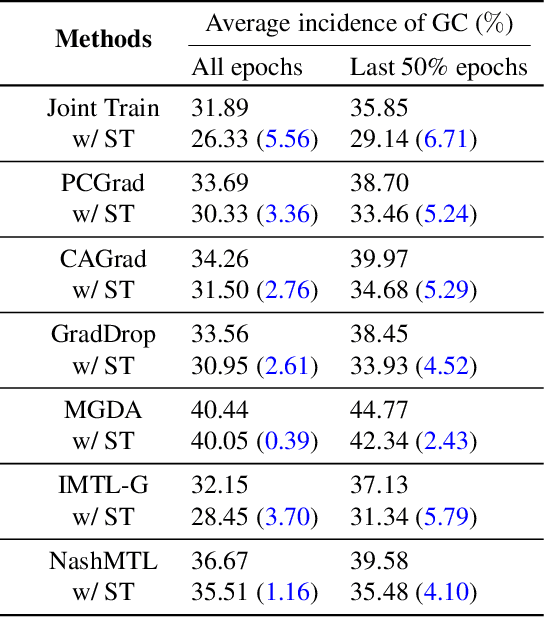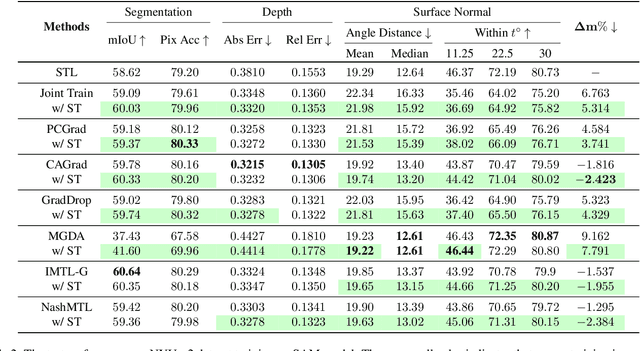Ekaterina Shutova
Shammie
Best-of-L: Cross-Lingual Reward Modeling for Mathematical Reasoning
Sep 19, 2025Abstract:While the reasoning abilities of large language models (LLMs) continue to advance, it remains unclear how such ability varies across languages in multilingual LLMs and whether different languages produce reasoning paths that complement each other. To investigate this question, we train a reward model to rank generated responses for a given question across languages. Our results show that our cross-lingual reward model substantially improves mathematical reasoning performance compared to using reward modeling within a single language, benefiting even high-resource languages. While English often exhibits the highest performance in multilingual models, we find that cross-lingual sampling particularly benefits English under low sampling budgets. Our findings reveal new opportunities to improve multilingual reasoning by leveraging the complementary strengths of diverse languages.
Cultural Evaluations of Vision-Language Models Have a Lot to Learn from Cultural Theory
May 28, 2025Abstract:Modern vision-language models (VLMs) often fail at cultural competency evaluations and benchmarks. Given the diversity of applications built upon VLMs, there is renewed interest in understanding how they encode cultural nuances. While individual aspects of this problem have been studied, we still lack a comprehensive framework for systematically identifying and annotating the nuanced cultural dimensions present in images for VLMs. This position paper argues that foundational methodologies from visual culture studies (cultural studies, semiotics, and visual studies) are necessary for cultural analysis of images. Building upon this review, we propose a set of five frameworks, corresponding to cultural dimensions, that must be considered for a more complete analysis of the cultural competencies of VLMs.
Beyond Words: Exploring Cultural Value Sensitivity in Multimodal Models
Feb 18, 2025



Abstract:Investigating value alignment in Large Language Models (LLMs) based on cultural context has become a critical area of research. However, similar biases have not been extensively explored in large vision-language models (VLMs). As the scale of multimodal models continues to grow, it becomes increasingly important to assess whether images can serve as reliable proxies for culture and how these values are embedded through the integration of both visual and textual data. In this paper, we conduct a thorough evaluation of multimodal model at different scales, focusing on their alignment with cultural values. Our findings reveal that, much like LLMs, VLMs exhibit sensitivity to cultural values, but their performance in aligning with these values is highly context-dependent. While VLMs show potential in improving value understanding through the use of images, this alignment varies significantly across contexts highlighting the complexities and underexplored challenges in the alignment of multimodal models.
Proactive Gradient Conflict Mitigation in Multi-Task Learning: A Sparse Training Perspective
Nov 27, 2024



Abstract:Advancing towards generalist agents necessitates the concurrent processing of multiple tasks using a unified model, thereby underscoring the growing significance of simultaneous model training on multiple downstream tasks. A common issue in multi-task learning is the occurrence of gradient conflict, which leads to potential competition among different tasks during joint training. This competition often results in improvements in one task at the expense of deterioration in another. Although several optimization methods have been developed to address this issue by manipulating task gradients for better task balancing, they cannot decrease the incidence of gradient conflict. In this paper, we systematically investigate the occurrence of gradient conflict across different methods and propose a strategy to reduce such conflicts through sparse training (ST), wherein only a portion of the model's parameters are updated during training while keeping the rest unchanged. Our extensive experiments demonstrate that ST effectively mitigates conflicting gradients and leads to superior performance. Furthermore, ST can be easily integrated with gradient manipulation techniques, thus enhancing their effectiveness.
Cross-modal Information Flow in Multimodal Large Language Models
Nov 27, 2024Abstract:The recent advancements in auto-regressive multimodal large language models (MLLMs) have demonstrated promising progress for vision-language tasks. While there exists a variety of studies investigating the processing of linguistic information within large language models, little is currently known about the inner working mechanism of MLLMs and how linguistic and visual information interact within these models. In this study, we aim to fill this gap by examining the information flow between different modalities -- language and vision -- in MLLMs, focusing on visual question answering. Specifically, given an image-question pair as input, we investigate where in the model and how the visual and linguistic information are combined to generate the final prediction. Conducting experiments with a series of models from the LLaVA series, we find that there are two distinct stages in the process of integration of the two modalities. In the lower layers, the model first transfers the more general visual features of the whole image into the representations of (linguistic) question tokens. In the middle layers, it once again transfers visual information about specific objects relevant to the question to the respective token positions of the question. Finally, in the higher layers, the resulting multimodal representation is propagated to the last position of the input sequence for the final prediction. Overall, our findings provide a new and comprehensive perspective on the spatial and functional aspects of image and language processing in the MLLMs, thereby facilitating future research into multimodal information localization and editing.
Self-Alignment: Improving Alignment of Cultural Values in LLMs via In-Context Learning
Aug 29, 2024Abstract:Improving the alignment of Large Language Models (LLMs) with respect to the cultural values that they encode has become an increasingly important topic. In this work, we study whether we can exploit existing knowledge about cultural values at inference time to adjust model responses to cultural value probes. We present a simple and inexpensive method that uses a combination of in-context learning (ICL) and human survey data, and show that we can improve the alignment to cultural values across 5 models that include both English-centric and multilingual LLMs. Importantly, we show that our method could prove useful in test languages other than English and can improve alignment to the cultural values that correspond to a range of culturally diverse countries.
Density Matrices for Metaphor Understanding
Aug 12, 2024Abstract:In physics, density matrices are used to represent mixed states, i.e. probabilistic mixtures of pure states. This concept has previously been used to model lexical ambiguity. In this paper, we consider metaphor as a type of lexical ambiguity, and examine whether metaphorical meaning can be effectively modelled using mixtures of word senses. We find that modelling metaphor is significantly more difficult than other kinds of lexical ambiguity, but that our best-performing density matrix method outperforms simple baselines as well as some neural language models.
* In Proceedings QPL 2024, arXiv:2408.05113
A framework for annotating and modelling intentions behind metaphor use
Jul 04, 2024



Abstract:Metaphors are part of everyday language and shape the way in which we conceptualize the world. Moreover, they play a multifaceted role in communication, making their understanding and generation a challenging task for language models (LMs). While there has been extensive work in the literature linking metaphor to the fulfilment of individual intentions, no comprehensive taxonomy of such intentions, suitable for natural language processing (NLP) applications, is available to present day. In this paper, we propose a novel taxonomy of intentions commonly attributed to metaphor, which comprises 9 categories. We also release the first dataset annotated for intentions behind metaphor use. Finally, we use this dataset to test the capability of large language models (LLMs) in inferring the intentions behind metaphor use, in zero- and in-context few-shot settings. Our experiments show that this is still a challenge for LLMs.
On the Evaluation Practices in Multilingual NLP: Can Machine Translation Offer an Alternative to Human Translations?
Jun 20, 2024



Abstract:While multilingual language models (MLMs) have been trained on 100+ languages, they are typically only evaluated across a handful of them due to a lack of available test data in most languages. This is particularly problematic when assessing MLM's potential for low-resource and unseen languages. In this paper, we present an analysis of existing evaluation frameworks in multilingual NLP, discuss their limitations, and propose several directions for more robust and reliable evaluation practices. Furthermore, we empirically study to what extent machine translation offers a {reliable alternative to human translation} for large-scale evaluation of MLMs across a wide set of languages. We use a SOTA translation model to translate test data from 4 tasks to 198 languages and use them to evaluate three MLMs. We show that while the selected subsets of high-resource test languages are generally sufficiently representative of a wider range of high-resource languages, we tend to overestimate MLMs' ability on low-resource languages. Finally, we show that simpler baselines can achieve relatively strong performance without having benefited from large-scale multilingual pretraining.
Are LLMs classical or nonmonotonic reasoners? Lessons from generics
Jun 12, 2024Abstract:Recent scholarship on reasoning in LLMs has supplied evidence of impressive performance and flexible adaptation to machine generated or human feedback. Nonmonotonic reasoning, crucial to human cognition for navigating the real world, remains a challenging, yet understudied task. In this work, we study nonmonotonic reasoning capabilities of seven state-of-the-art LLMs in one abstract and one commonsense reasoning task featuring generics, such as 'Birds fly', and exceptions, 'Penguins don't fly' (see Fig. 1). While LLMs exhibit reasoning patterns in accordance with human nonmonotonic reasoning abilities, they fail to maintain stable beliefs on truth conditions of generics at the addition of supporting examples ('Owls fly') or unrelated information ('Lions have manes'). Our findings highlight pitfalls in attributing human reasoning behaviours to LLMs, as well as assessing general capabilities, while consistent reasoning remains elusive.
 Add to Chrome
Add to Chrome Add to Firefox
Add to Firefox Add to Edge
Add to Edge